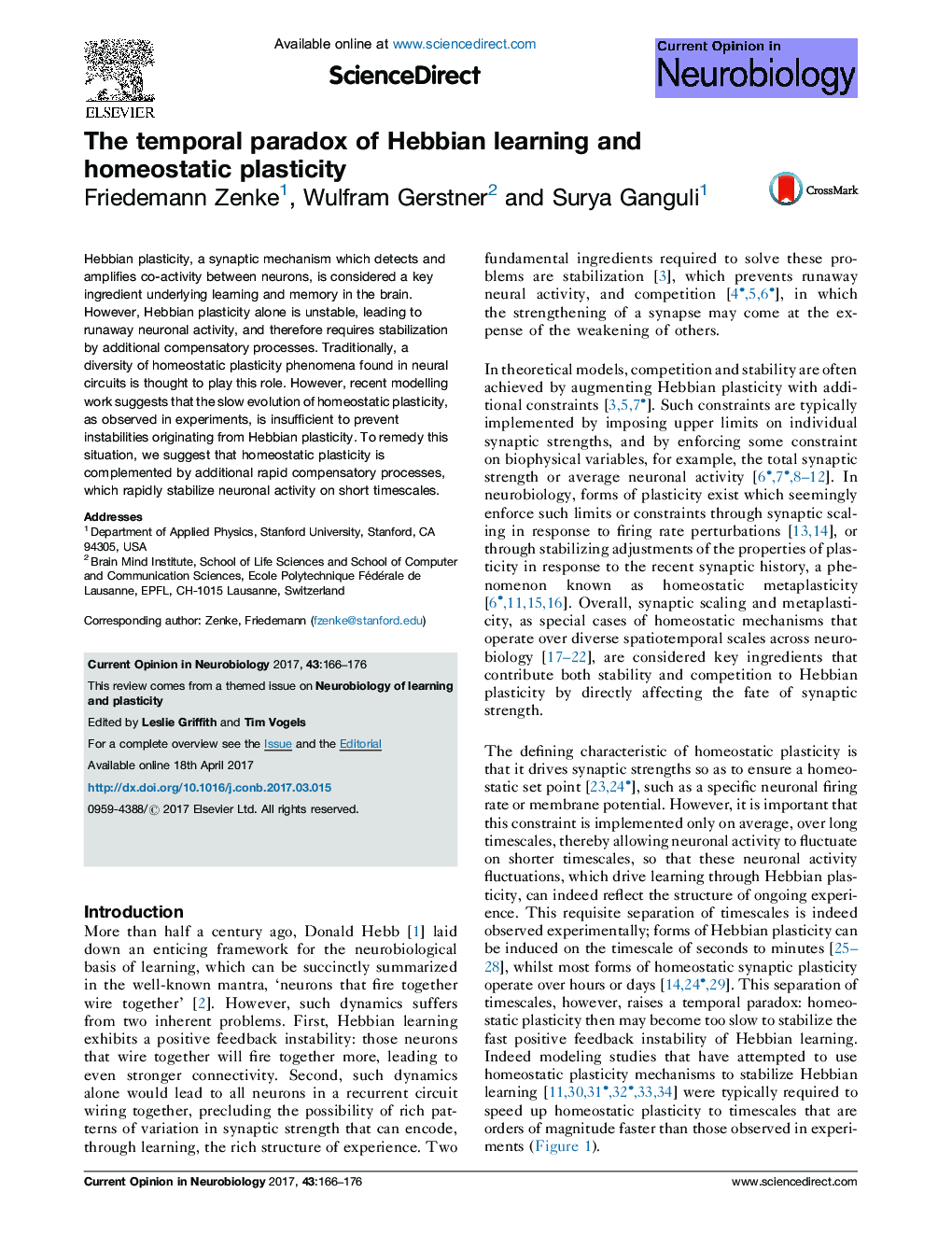| Article ID | Journal | Published Year | Pages | File Type |
|---|---|---|---|---|
| 6265990 | Current Opinion in Neurobiology | 2017 | 11 Pages |
â¢Hebbian plasticity can be induced rapidly, while homeostatic plasticity is slow.â¢In models of synaptic plasticity this separation of timescales leads to instability.â¢We suggest that Hebbian plasticity is stabilized by rapid compensatory processes.
Hebbian plasticity, a synaptic mechanism which detects and amplifies co-activity between neurons, is considered a key ingredient underlying learning and memory in the brain. However, Hebbian plasticity alone is unstable, leading to runaway neuronal activity, and therefore requires stabilization by additional compensatory processes. Traditionally, a diversity of homeostatic plasticity phenomena found in neural circuits is thought to play this role. However, recent modelling work suggests that the slow evolution of homeostatic plasticity, as observed in experiments, is insufficient to prevent instabilities originating from Hebbian plasticity. To remedy this situation, we suggest that homeostatic plasticity is complemented by additional rapid compensatory processes, which rapidly stabilize neuronal activity on short timescales.
